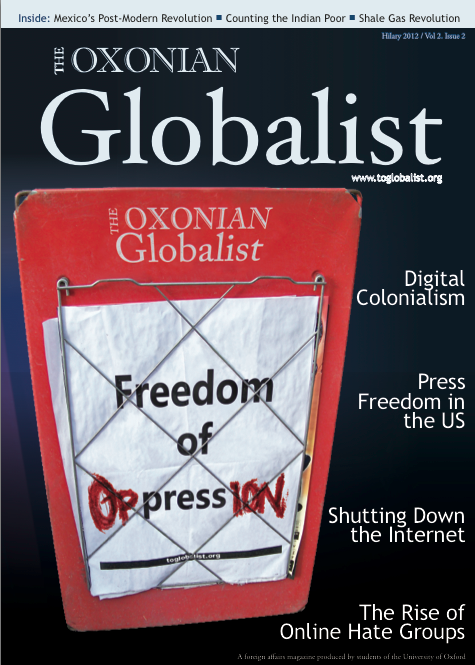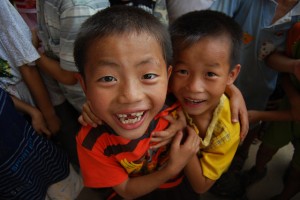WHILE the Great Firewall still blocks (well, fetters) access to Twitter and Facebook, their Chinese equivalents are thriving. For Facebook, China has Renren; for YouTube, YouKu; and for Twitter, Sina Weibo. Predicted to hit 120 million members by 2012, Weibo’s micro-blogs offer a real-time forum which China’s censors can’t quite keep up with, becoming an oasis of free speech and an unexpected platform for mass mobilisation in China.
Weibo has been credited by the Western media with spreading the news of Ai Weiwei’s detention, supporting Liu Xiaobo’s Nobel Peace Prize and calling for China’s own “Jasmine Revolution”. Yet within China, Weibo is fast becoming famous for a cause equally controversial though less known to the outside world: child trafficking.
Although the official figure is 10,000, it is estimated that as many as 70,000 children are trafficked every year in China. The lucky ones are adopted: with China’s one child policy in place it is often cheaper to buy a child with all the necessary paperwork included, rather than pay the fines an illegal birth would incur. The unlucky ones are forced to work as beggars – beaten, starved and even disfigured to bring in money for their handlers.
Capturing Children
In January, a human rights activist and professor at the Chinese Academy of Social Sciences, Yu Jianrong, set up a Sina Weibo microblog urging the public to take pictures of street children and upload them. The project gained momentum, picking up extensive media coverage, 100,000 followers and 2,000 photos within the first few weeks.
The Global Times (sister publication of China Daily) was quick to criticise the online campaign. Despite its good intentions, the campaign had apparently “unexpectedly resulted in many homeless families being wrongfully targeted, or family members being separated”. Those described as “volunteer netizen cops” were advised to leave it to the real police.
Yet in the few success stories of reunited families, parents have not relied on the authorities. The day before they posted their criticism of Yu Jianrong’s campaign, the Global Times covered the story of Peng Guofan, whose three year old son, Wenle, was kidnapped. After Peng Guofan spent three years searching for him, turning his telephone centre into a search centre and sending letters to President Hu Jintao, Premier Wen Jiabo and the State Council, Wenle was finally found when his photo, posted on Sina Weibo by a Hong Kong journalist, went viral.

Yu Jianrong's Sina Weibo Microblog
When Peng first approached the police after his son went missing he was told “human trafficking disappeared in Gongming over a decade ago”. His suspicions of abduction were dismissed and when the investigation finally began it was slow and not given priority. Families across China have faced similar situations and, failed by the authorities, are forced to think up increasingly inventive ways to find their children. Some hire private detectives. Others pay for their child’s photo to feature on the back of playing cards in decks that are distributed in villages across China, free of charge. Weibo is the latest development.
A Silent Problem
Despite the government’s “National Plan of Action on Combating Trafficking in Women and Children (2008-2012)”, tightened laws and the introduction of a DNA database to help match children to their families, real results are yet to be seen. For every happy ending and reunited family, thousands still plead for help. Unable to cope with or even acknowledge the true scale of the situation, the government has banned “missing child” posters and prevents parents from speaking out to the foreign press. The official government standpoint is that China needs to stop “pointing fingers” and “attack the roots” of the problem.
The government is right: the fault does not lie simply with the police, who probably lack both resources and training to deal with child abduction. Nor is it simply a result of current family planning policies, which create a demand for children. However, the “roots” of the problem are still out there waiting to be attacked. The central government needs to get local governments under control, strengthen the rule of law, stamp out corruption, improve their welfare system, increase legitimate means of adoption and get rid of illegal ones (Taobao, China’s Amazon or eBay, even has a section for “adoption”, where child traffickers often pose as parents).
The Social Network
That’s a long to-do list. In the meantime, social movements such as academic activist Yu Jianrong’s microblog offer parents alternative means to find their missing children when the police give up. Interviewed with Wang Yukai, Secretary General of China’s Administrative Reform Research Committee, at the beginning of the year, Yu Jianrong argued that the Chinese government had “demonised mass events” in the interest of “maintaining stability”. He argued that what is seen as a “normal expression of interest” in other countries is seen as a security threat in China. The Global Times’ criticism of Yu Jianrong’s campaign reflects the government’s ambivalent attitude towards social networking, the mass event of the early 21st century. Yet the overwhelming support from internet users and celebrities, which has drowned out the lone voice of the state controlled press, has shown the growing plurality of the Chinese media.
While wary, the Chinese government should see the campaign for what it is: not a threat, but the positive use of social media towards the public good.





Comments are closed